Heritage Sandbox Starting Out...
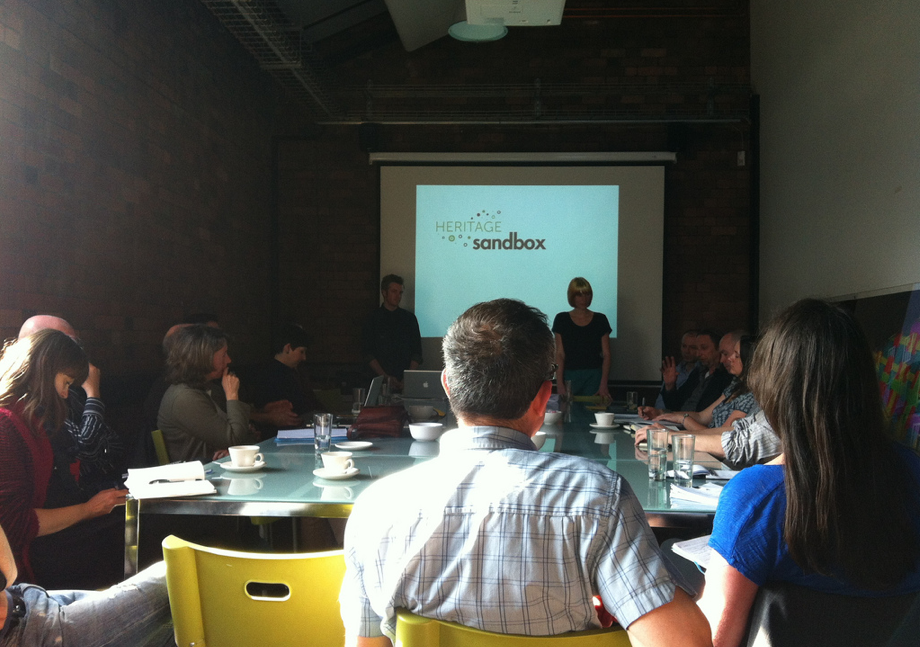
Monday was our welcome meeting for the Heritage Sandbox projects here at the Pervasive Media Studio. It was a really important day for us, with the teams meeting each other for the first time and the exciting optimism of so many inspiring ideas beginning to rub up against the gritty reality of the next 3 months’ hard work. This can be a bit scary so it was great to see the beginnings of a supportive community emerge – already teams are swapping contacts and advice or arranging to meet up and discuss specific issues.
We asked the group to spend 20 minutes coming up with 20 questions for their project over coffee. Sandbox is all about exploring what we don’t know and by sharing these questions the burden of trying to answer them is eased – plus, you never know, the person next to you might already have the solution. I’m sure the questions themselves will change over time but watch this space…
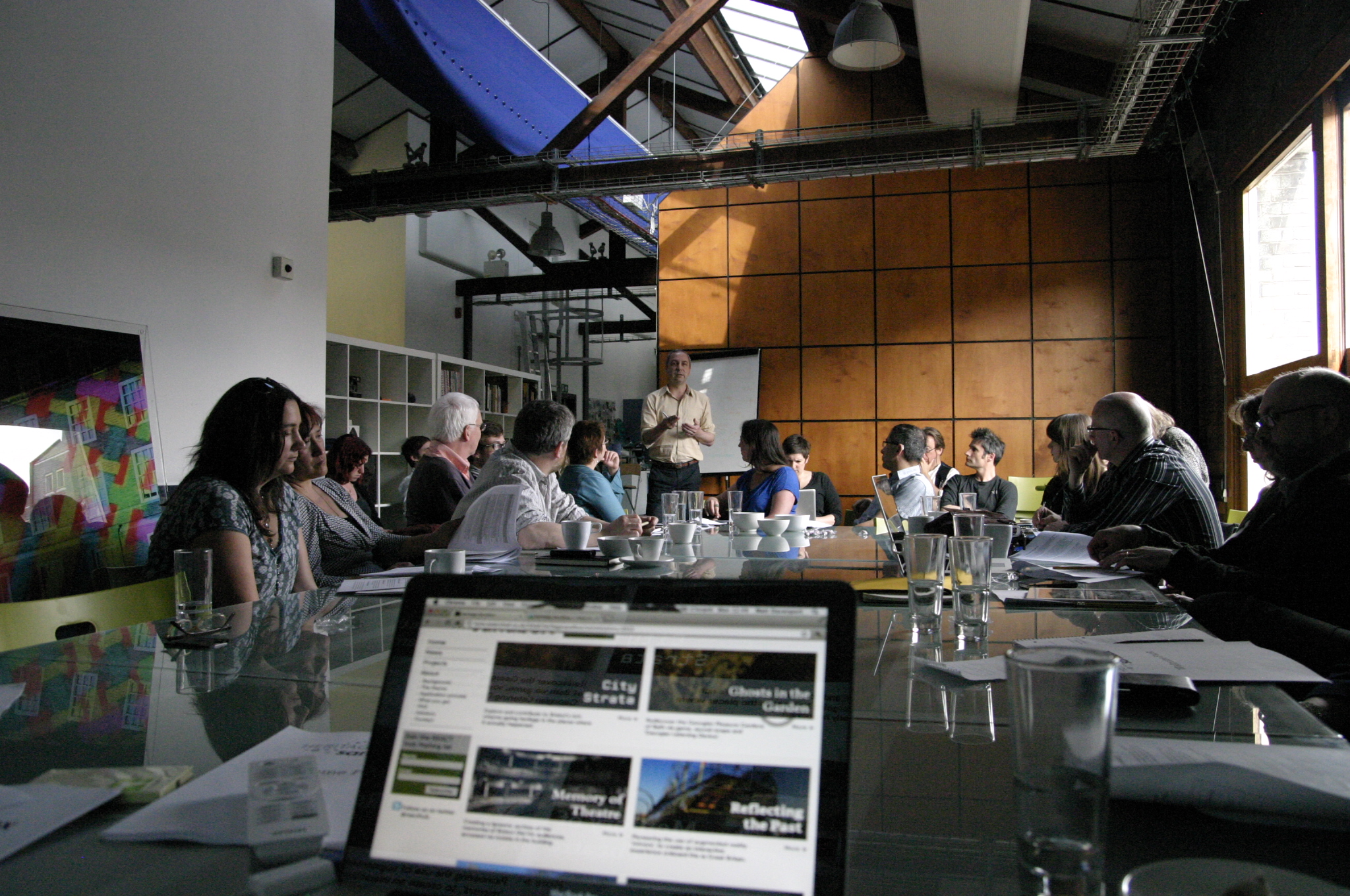
Ghosts in the Garden
Rosie Fairchild of Splash & Ripple and Steve Poole met at a REACT Ideas Lab; with Rosie just on the brink of setting up Splash & Ripple as a limited company and Steve a self-confessed technology novice their relationship is an exciting one to watch. Steve and Rosie are like an advert for knowledge exchange; they spoke convincingly about the importance of creative content that stimulates both mind and body, which both informs and affects. Their questions demonstrate the tensions between ideas and delivery beautifully.
• How can Steve fit this work in with other UWE commitments in next 3 months?
• How are we going to manage this project? Roles and responsibilities.
• What do we do if the quality of historical content is not there and when do we decide to stop looking?
• Can we reshuffle budget?
• Is what we want to achieve possible in the time we’ve got?
• How can we hide the (phone) tech effectively?
• What is our priority in this project? Experience/Feel (connection of audience with past). Information. Connection Park/Museum.
• What is our ballast?
• How are we going to manage story/workshops?
• What is the best way to manage our time? How much is it?
• How do we balance thinking BIG and producing a tangible outcome? In real practical terms – creativity and exploration vs product.
• Will we be ready/willing to see/take up opportunities and innovations when they pop up?
City Strata
Charlotte Crofts and Jo Reid of Calvium make an excellent addition to the cohort, we noticed them both offering quiet support and advice to other teams throughout the morning. It was also great to have Peter Insole of Bristol City Council at the event to talk about his involvement in this project but also to hear from the other Bristol based teams. Charlotte and Jo know the platform that their content will be delivered on and have a wealth of experience in user design so its no surprise to see the detailed issues that they are already grappling with – their aim to make the technology usable for other developers is evident in the rigour and focus of these questions.
• What’s the right balance between control and spontaneity?
• What needs to be in the app versus website?
• What content is compelling in place?
• How should audio be mixed and created?
• How can you make sure user generated content is compelling?
• How do you manage audio contributions?
• How do you manage people’s expectations?
• What’s the real nature of use, small samples versus whole experience?
• Battery life on phones – how can you preserve it?
• How should we make the experience useable on all phones?
• How can we get rights to film samples? IMDB?
• How can the prototype location still convey cinemas not in that area?
• How do you decide your priorities? Key delivery outcomes.
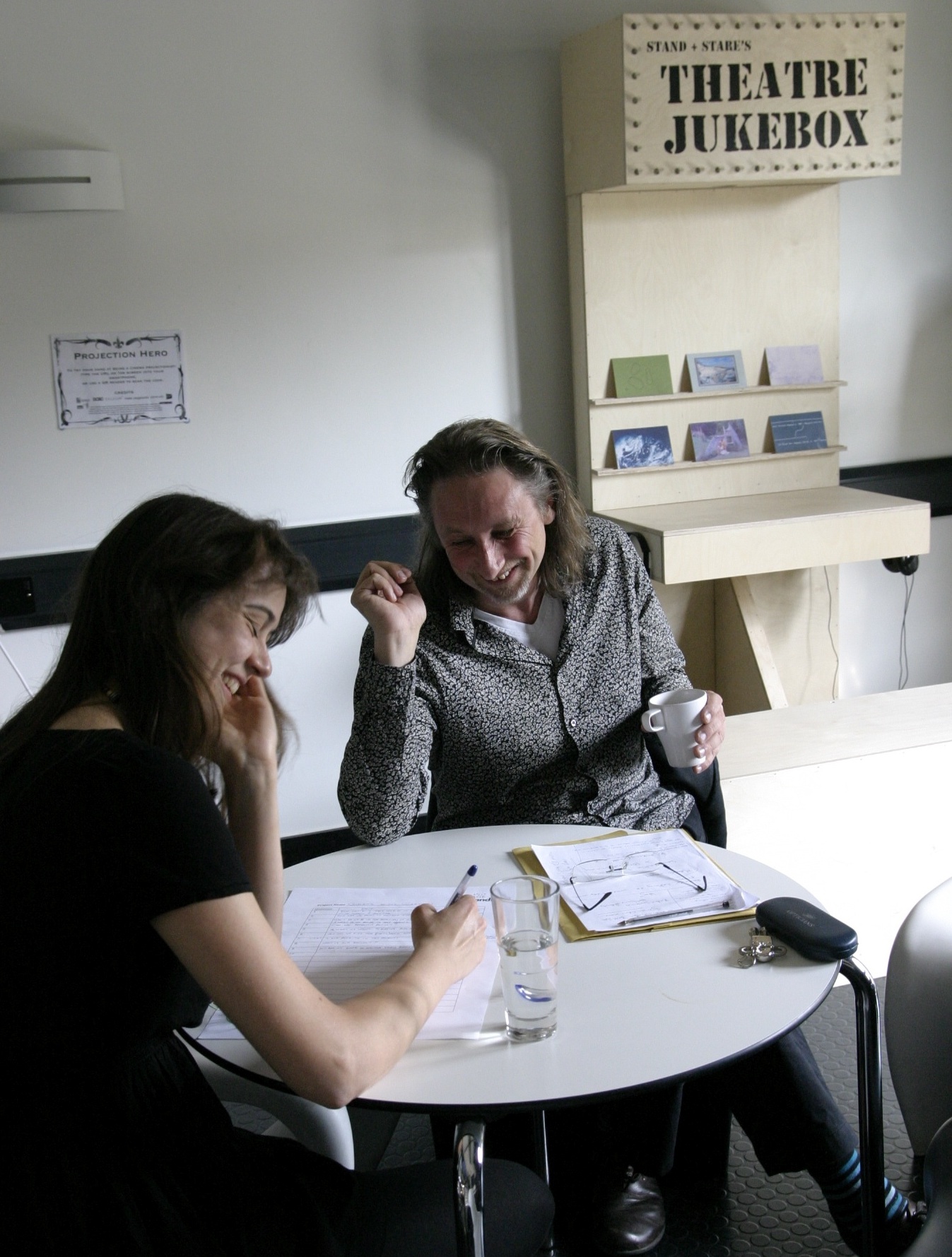
Future Cemetery
Felicia Smith from Arnos Vale Cemetery, Jeremy Routledge from Calling the Shots and John Troyer are clearly really keen to build a thriving Sandbox community. Their energy is infectious and the subject matter intriguing, we can’t wait to see what they will do with it. The drive and enthusiasm of this project is palpable in their questions, they are big and bold and ambitious - which is a fantastic place to start.
• Is a live event part of this?
• Can visitors contribute/build an event via digital tech/app?
• What is realistic to achieve in 3 months?
• Who is the audience? Do theyhave to own a smart phone to access?
• How flexible is the budget? Between cost lines. What’s the wriggle-room?
• How to fit project testing and commitments into pre-existing public programme? Other workload.
• How to find out how marketable any new ideas/technologies will be?
• How can we capitalise on the wider Sandbox network?
• The revolution starts here! But how far will it spread in changing cultures?
• Where does the visitor/user fit into developing the ideas?/needs?
• When to narrow down the options/parameters. How flexible is the timescale?
• How will we be able to tell that the project has been a success?
• How big can the sandbox collaboration grow? How many partners can we add?
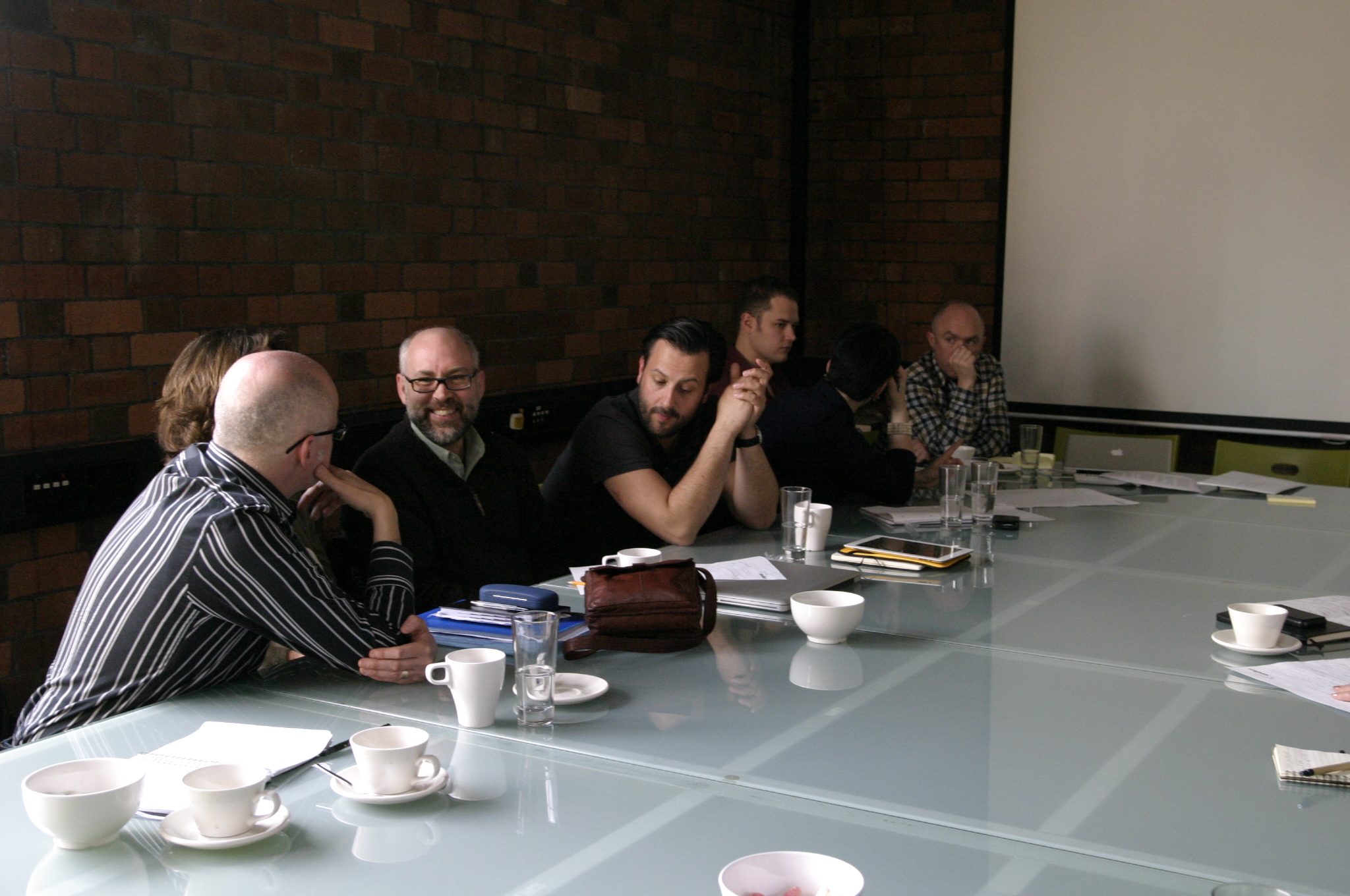
The Ivory Bangle Lady
It was clear just how keen this team are to engage with all of the projects outside of the formal sandbox events. Paul Davies and Charlie Curnow of Imagemakers have a huge amount of knowledge to offer the rest of the cohort in terms of interpretation strategy and design, whilst Christopher Knusel and Stephany Leach’s research into the mysterious Ivory Bangle Lady is fascinating… It’s certainly an accomplished team, although it was noted that the team were grappling with the reality of their chosen site being so far away in York and the logistics of this.
• What about VAT?
• Timing is always a problem. When one applies for a grant, one never knows if it will be successful and, by the time one knows, other things crowd out the project. How can this situation be avoided or minimised?
• Ownership of results?
• How do we cater for different audiences?
• How do we test our idea(s)?
• Who are/is our audience? How do we define them?
• How do we destil our ideas into technologies?
• How much must be completed by the end of the project?
• How can we build linkages between projects?
• How can we incorporate medical technology?
• How do we create a finished product? How can we take it forward?
• How do we accommodate regionalisms in Britain: Bristol or York?
• What can we do in the physical space? What is it?
• How do we time tests and installations in a working museum?
• What hardware is available?
• How do we engage our viewers/visitors in the project?
• How do we prioritise and focus our project? Objective-setting?
• How soon can we get to York?
• How regularly do we meet?
• How do we give the Yorkshire Museum something in 3 months’ time?
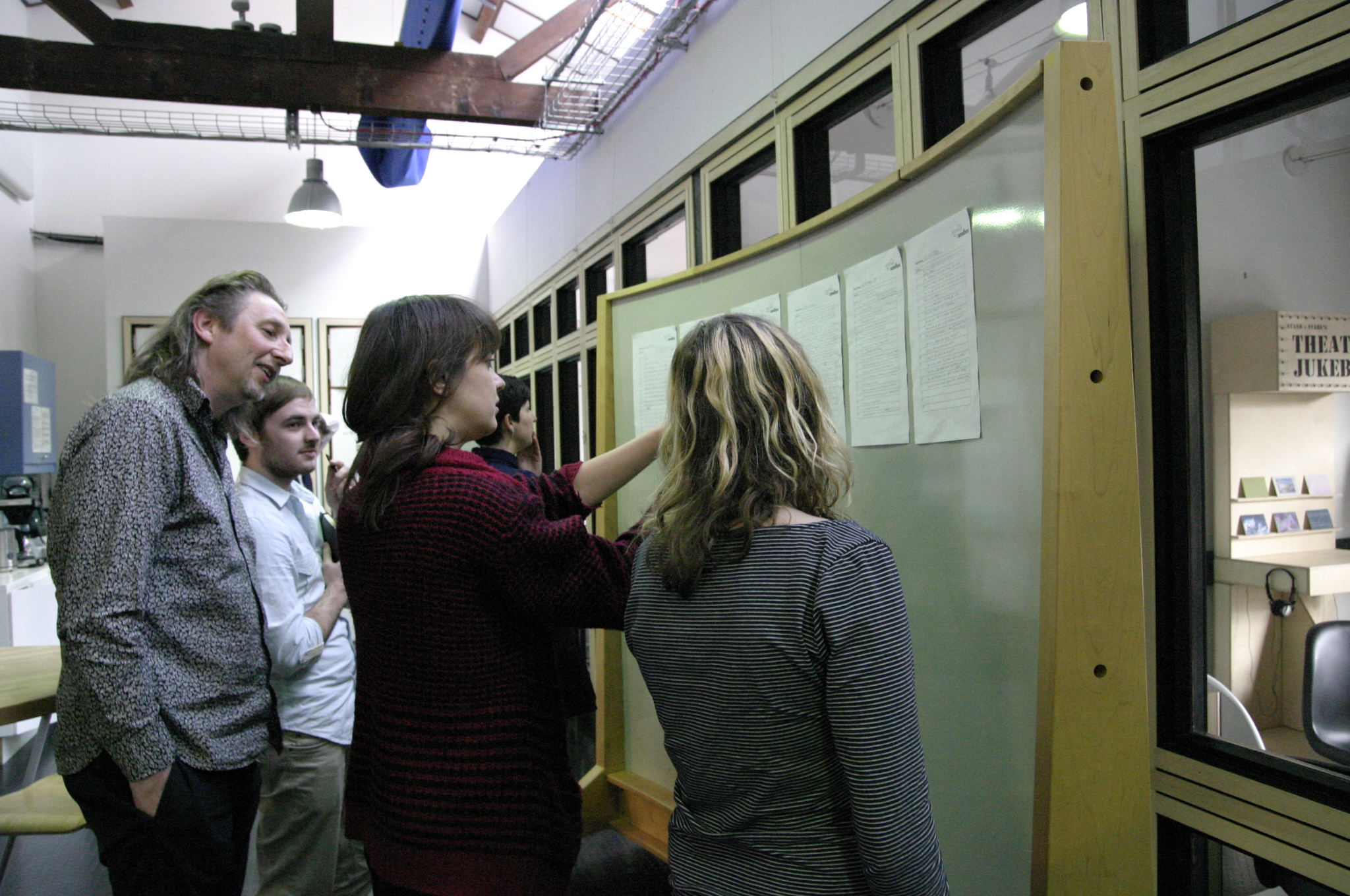
Reflecting the Past
There was a collective excitement about Tom Bennett and Tim Cole’s proposal to create augmented reality mirrors aboard the ss Great Britain. Aside from the obvious high technical aspirations for the project, Rhian Tritton representing ssGB spoke about the importance of the narrative and adding an element of fiction to augment the factual experience.
• How much content do we include that isn’t in the primary sources?
• What do we do if the mirrors/screens don’t work?
• How do we make it feel real for visitors?
• How do we measure outcomes for visitors?
• How do we establish roles and relationships?
• How does SSGB adapt to a different way of working?
• How do we make the best use of academic research?
• How do we use the research in a way that makes it most accessible to the public?
• How do we manage stress during the project?
• Do we create an overarching narrative?
• What are the priorities for the project?
• How do we reconcile the partners’ different priorities?
• How does SSGB manage internal expectations about the project?
• How does the project team capture the internal learning?
• How far can we mitigate against future stumbling blocks/crises?
Memory of Theatre
Experiences have an after-life for theatre-goers and when recalled and retold at that exact site, the finer details emerge and a bigger picture builds. Paul Clarke spoke passionately about binaural audio experiences in the theatre and demonstrated the potential power in site-specific story telling. Cliff Randell has a wealth of experience with location-based hardware and brings to the project first hand knowledge of installing and testing at Bristol Old Vic. There were lots to think about for this team as they battle with the renovation of the auditorium within their production schedule.
• How to coordinate our development process with BOV programme of works.
• What is the key attribute of the locative experience that differs from other solutions?
• How to make the installation invisible and to work with the renovation.
• How best to publicise the memory collection and to encourage audience participation in project.
• How scripted should recordings be?
• How best to conduct and manage recording and editing process?
• How complex/theatrical should sound design be?
• Will there need to be visual as well as auditory cues?






